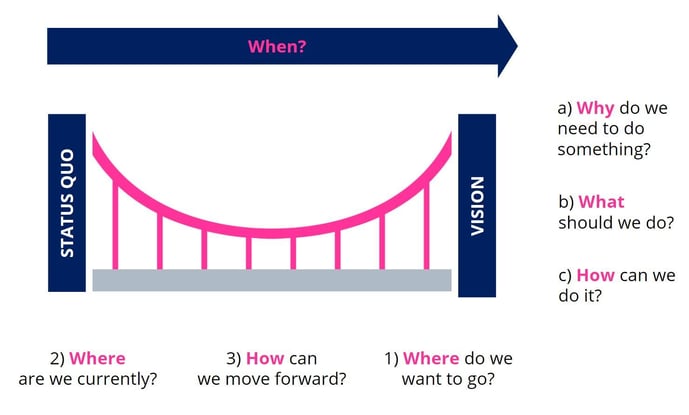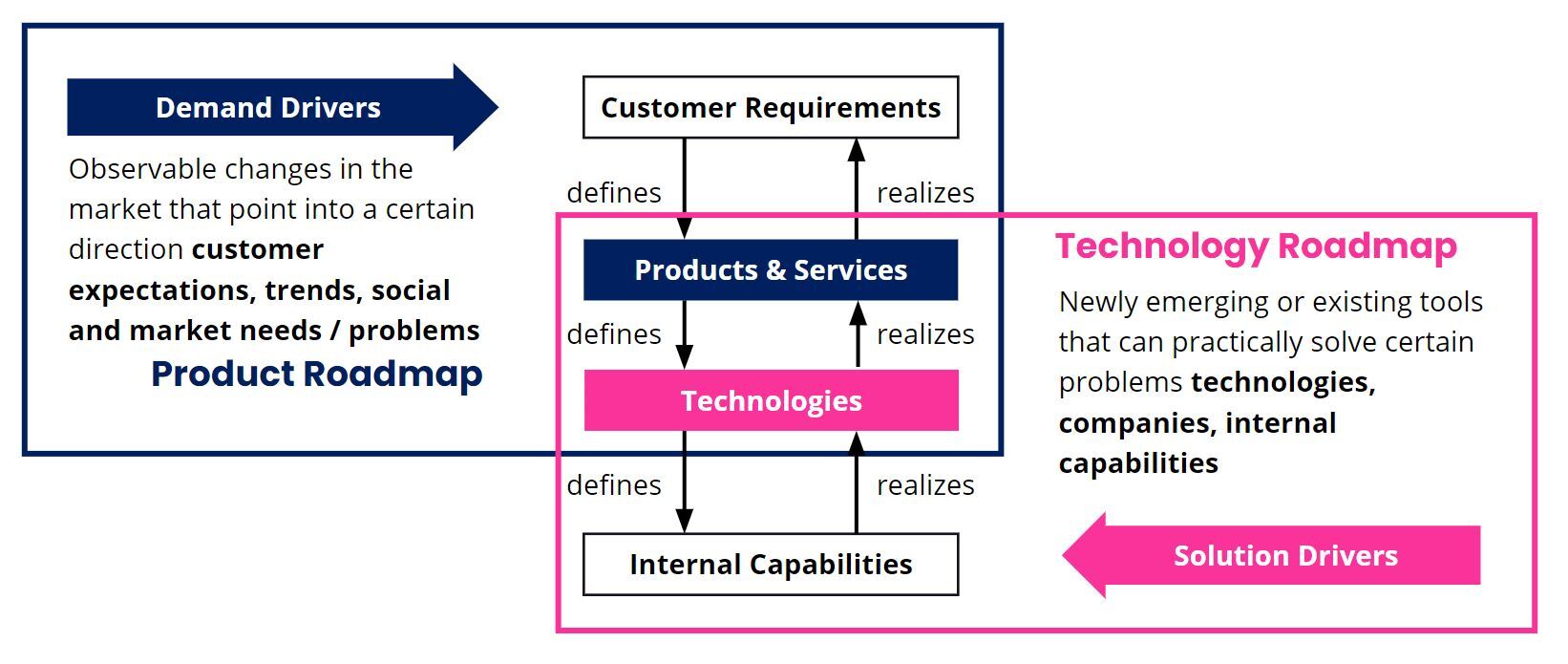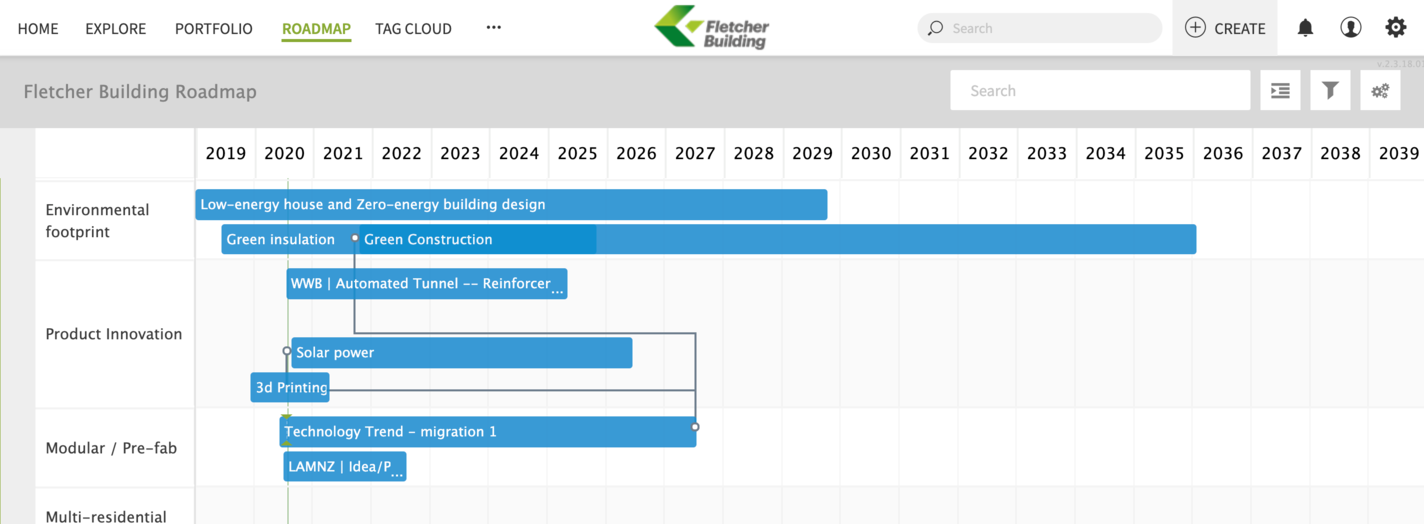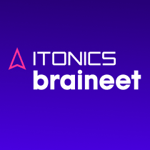Developing objectives and setting benchmarks of success is critical for an organization's innovation journey.
In our blog "How to Identify Relevant Trends and Technologies for your organization", we discussed the importance of comprehensively and continuously scanning your environment to find trends and emerging technologies aligned with your business model. Consistently monitoring, rating, and evaluating trends and emerging technologies empowers organizations to develop different short and long-term goals and make the necessary adjustments as they observe changes within the market.
By setting a clear view of external factors alongside internal capabilities, businesses can carve out those opportunities that they are best placed to capitalize upon and create a plan for executing their innovation strategy. Roadmaps play a critical role in analyzing demand drivers alongside solution drivers to develop an efficient, evidence-based innovation strategy.
→ Download: All about ITONICS Roadmap Software for collaborative Roadmapping
What Is Roadmapping
As the third step of the Foresight & Strategy framework, Planning & Goals attempts to align an organization's purpose with its innovation objectives by creating top-to-bottom awareness to ensure all stakeholders are singing from the same proverbial hymnbook. The roadmap can be thought of as that hymnbook.
In its most basic iteration, a roadmap is a representation of the milestones and deliverables required to manage the transition of an organization from its current state to a future state over a specific time period. An innovation roadmap, however, is not simply a visual tool. Organizations utilize innovation roadmaps to develop connections between internal capabilities, external drivers, and innovation goals to flesh out a timeline that shows internal stakeholders their future-focused aspirations. As a result, the innovation roadmap is critical in consensus-building and crafting future business capabilities and desired outcomes without the duplication of resources.
|
|
The 5 Step Process of an Innovation Roadmap
1. Objectives
- Definition of individual objectives and factors such as clarity, responsibility, data quality and integration into the company are essential.
- Roadmapping = development of short, medium and long-term goals for the introduction of the method in the company.
2. Types
- 3 dimensions: time frame (short, medium or long-term), degree of detail (depth and details), type and roadmap.
- 4 types of roadmaps with different focuses: product/innovation roadmap, technology roadmap, integrated roadmap or company roadmap.
3. People involved & Commitment
- Definition of people involved and responsibilities for methodology, coordination, technical input.
- Ensuring the top management's necessary commitment.
4. Structure & Processes
- 3 main layers (market, products and resources) and time dimension.
- 3 main questions: Where do we want to go? Where are we today? How do we get there?
5. Integration into Innovation Management
- Integration into the higher-level innovation management enables agile, flexible, scalable and responsive design and puts roadmapping at the center of strategy development.
Why Roadmapping Is Important in End2End Innovation
Roadmapping is a sense-making exercise; by consolidating resources, understanding the type of innovation journey being undertaken, and what trends and emerging technologies are pertinent, innovation managers can create a clear timeline and develop reasonable milestones.
In addition to this, road mapping can assist innovation managers to answer a variety of questions about their innovation journey:
- Which trends and markets will influence our future business?
- When will scenarios play out and what potential opportunities and risks do stakeholders need to be made aware of?
- Which products do we want to offer?
- With the help of which technologies, competencies, and resources can we achieve our goals?
Any company that wants to be competitive in the long term in an uncertain and complex environment must systematically analyze and forecast future developments. Most executives report a gap between strategy and product development. Roadmapping offers a bridge between innovation opportunities across various horizons as well as operates as an ideal tool for structured planning, implementation, and visualization of your innovations and corporate strategy.
The key to greater buy-in is understanding the needs of the audience to whom you are communicating your innovation roadmap within your business. Think critically about how the innovation objectives align with their roles and ultimate purpose within business functions.
Modular structure of a roadmap:

Innovation roadmaps empower businesses to:
- Plan and steer future product developments and technologies.
- Raise company-wide alignment.
- Deliver a high-level overview of products, technologies, and resources.
- Understand the current state of your company at a glance.
- Do day-to-day operational planning and execution.
- Predict future needs such as key technologies and resources.
- Detect time inconsistencies and synergies in strategic planning early on.
Communicating a Roadmap to Stakeholders
The involvement of key stakeholders early onwards is a crucial part of the innovation planning process. Going straight from roadmap creation to implementation without involving key departments can alienate people and often lead to confusion.
A roadmap promotes communication in a company, and therefore it is not just a tool for management. The explicit goal must be to integrate the affected departments into the process as early as possible. Clear responsibility for method competence, coordination, and input must be communicated and lived as clearly and transparently as possible.
Demand Drivers vs. Solution Drivers
As highlighted in our Where To Play 2021+ report, trends represent a market pull, acting as a guide to organizations in general and innovation departments in particular as to what consumers expect and need. Emerging technologies, in contrast, play an equal yet opposite role, representing a market push to meet market needs and expectations and, at times creating new desires.
The above is imperative in understanding which innovative roadmap is most suited to one’s strategic objectives. Communicating to stakeholders which type of innovation activity is being planned is vital. The Product Roadmap focuses on the demand drivers that attempt to highlight consumer desires, i.e., trends.
The Technology Roadmap focuses on solution drivers, which aim to leverage internal capabilities to improve the organization’s business model, i.e., emerging technologies.

How to Use the ITONICS Roadmapping Tool
The high effort perceived with creating and updating roadmaps deters many companies from even embarking on an innovation journey. In addition to the effort required to develop roadmaps for the first time, difficulties in maintaining roadmaps are often cited as the main obstacle to the effective company-wide implementation of roadmaps. At ITONICS, we have developed a software solution to the aforementioned hurdles.
%20Portfolio%20Webinar%20-%20Strategy%20Roadmap.webp?width=822&height=463&name=13)%20Portfolio%20Webinar%20-%20Strategy%20Roadmap.webp)
The digital roadmap tool acts as a single point of truth to help organizations plot their strategic planning of products, markets, technologies, and resources.
Instead of utilizing a static Excel or PowerPoint document, the ITONICS Roadmap Tool allows you to take emerging technologies and trends and correlate these with your innovation objectives, hosting these across a timeline on a dynamic, collaborative, interactive software.
Through integrating different business units, the ITONICS Roadmap Tool can aggregate roadmaps distributed across multiple departments into one overarching, integrated roadmap, enabling a top-down and bottom-up analysis of strategic planning for the next 5-20 years.
Whether it is a Product or Technology Roadmap or perhaps a hybrid of both, the ITONICS Roadmap allows holistic forecasts to be made about a technology’s market impact over time and alignment to market demands.
To learn more about innovation roadmaps and how the ITONICS Roadmap Tool can help you to achieve your innovation goals, contact us for a one-to-one demo presentation.
Best Practice: Snapshot from Fletcher Building Case Study
A key example of a client that utilized roadmapping in general and the ITONICS Roadmap Tool, in particular, is New Zealand construction and manufacturing giant Fletcher Building.
En route to establishing themselves as pioneers of sustainability within the manufacturing space, Fletcher Building used the ITONICS Roadmap Software to align its strategic goals to internal and external innovation activities. Fletcher used the ITONICS Roadmap Tool to integrate and align their mission to fuel growth opportunities, innovation success, and company-wide collaboration.

Through the use of the ITONICS Roadmap Tool, the organization was able to effectively visualize and contextualize solution drivers and demand drivers alongside defined innovation projects. As a result, dependencies in innovation implementation became clear to see.
Looking at the image above, the Fletcher roadmap levels represent the company's overarching strategic initiatives: environmental footprint, product innovation, modular/prefabricated systems, multi-family housing, distribution role, and supply chain.
To firmly anchor innovation as the driver of growth in our company, we have actively sought a partner who could consult and support us best in innovation enablement and company-wide collaboration. The ITONICS platform has become an integral part of the innovation culture and is contributing to the cross-pollination of pioneering growth opportunities at Fletcher Building.
- Dr. Lisbeth Jacobs, General Manager of Innovation & Sustainability, Fletcher Building
As seen above, companies that skip the creation of roadmaps will miss opportunities to engage various stakeholders in developing a shared vision for the realization of business outcomes. The timelining aspect, the stepped approach to defining mini-targets, fulfilling those in terms of a larger innovation and strategic vision, is most effectively done with dynamic, collaborative software.
FAQs:
How to Use ITONICS Roadmap Templates
Creating a New Roadmap
How to Create/Add Milestones to a Roadmap
How to Create/Add an Existing Activity on a Roadmap











